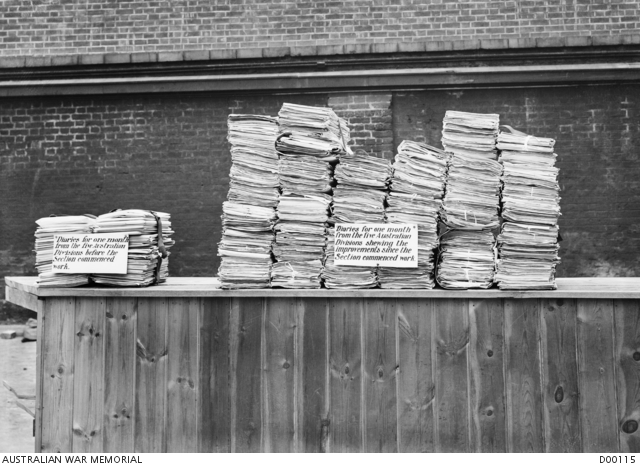The Australian War Records Section
In May 1917, the Australian War Records Section (AWRS) was formed in London. It is from this date that we trace the formal origins of the Australian War Memorial. Over the next two years the AWRS acquired approximately 25,000 objects, as well as paper records, photographs, film, publications, and works of art. All were brought back to Australia in 1919 and formed the basis of the collection of what would eventually become the Australian War Memorial.
The AWRS was set up at the prompting of Charles Bean, Australia’s official war correspondent, soon to be made official historian. It was led by John Treloar, a young army officer later appointed the Memorial’s Director. On 16 May 1917, Lieutenant Treloar walked into an obscure office in London, pulled up a chair and got down to work. He initially had a staff of just four. The section's task was to collect and organise the documentary record of the Australian forces, so that it could be preserved for Australia, rather than be absorbed into Britain's records. Bean had been impressed with the work of the Canadians in establishing in London a Canadian War Records Office. And like the Canadians, the Australian section quickly began collecting and commissioning a wide range of material.
Studio portrait of Lieutenant John Linton Treloar on receiving his commission in the Australian Flying Corps.
The Canadian and Australian governments were aware that a war museum was being formed in Britain and they would on no account allow the British to secure the best Canadian or Australian ‘trophies’ and records for its museum. Bean felt strongly that the records and ‘relics’ (as he called them) that told of Australian achievements and sacrifice should be collected and shipped home to become the possession of the Australian people.
Under the direction of John Treloar and the AWRS, this is what happened. After the war, in 1919, an ‘Australian War Museum’ (later Memorial) was formed in Australia from the collections amassed by the section. In 1920 Treloar was appointed Director, a position he held until his death in 1952. Bean and Treloar worked together during these years to guide the Australian War Memorial into being.
The AWRS is therefore the parent organisation of the Memorial. From tiny beginnings, it grew. Based in London, it developed networks of field officers in France and Egypt, and by late 1918 was employing over 600 staff, military and civilian. Through its circulars and by personal contact, it encouraged soldiers of all ranks to maintain the best possible official records, and to collect and send in the best museum objects. By February 1919, approximately 25,000 objects were waiting to be shipped home. These included not just large objects such as vehicles, heavy weapons, a tank and several aeroplanes, but smaller weapons and equipment, tools, trench signs (including the famous ‘Roo de Kanga’ sign), uniforms, flags, medals and souvenired material. Some objects were distributed to the Australian states in the immediate post-war years; the rest were retained by the Memorial.
A sign which reads 'Roo de Kanga', a characteristic example of Australian street nomenclature, in Peronne, a month after its capture by the Australian troops. Note the shell damaged buildings in the background.
At the 5th Tank Brigade demonstration ground, Vaux-en-Amienois, France, Australian soldiers inspect Mephisto, a German A7V tank.
Trophies captured by the Australian troops during the battle of Hamel, at the Australian War Records Section Collecting Depot at Ailly-sur-Somme. The two guns in the foreground are '08/15 bipod medium machine guns and the two large guns in the background (with wheels) are Minenwerfer '08 pattern heavy mortars on sled mounts.
It is on the basis of this collection, and the vision and dedication of the people behind it, that the Memorial has become more than just a monument. It is an expression of a unique idea: that people should come to the Memorial to learn and to understand, as well as to reflect and to remember. The Memorial's building in Canberra opened in 1941 and it has become one of the world's finest museums, holding a collection of historic material that documents and illustrates the Australian experience of war. Its three parts - the commemorative area, the galleries, and the Research Centre - work together to fulfil the Memorial's purpose.
Exterior view of the Grey Coat building occupied by the Australian War Records Section in Horseferry Road.
Two stacks showing the comparison between the number of war diaries in bundles, submitted for one month by units of the five Australian Divisions, before, and after the establishment of the Australian War Records Section.
The Public Record Office, Chancery Lane, London. In this building the Australian War Records Section was formed in May 1917 and it continued to occupy rooms here until March 1919.
The staff, engaged in completing the war diaries for the British Government at work in one of the section's rooms at the Public Records Office, Chancery Lane.
Members of the War Records Section in the office. From left to right: Lieutenant Murray, Official Surveyor; Mr Gullett, Official War Correspondent; Lieutenant O'Connor, Photographic Officer.
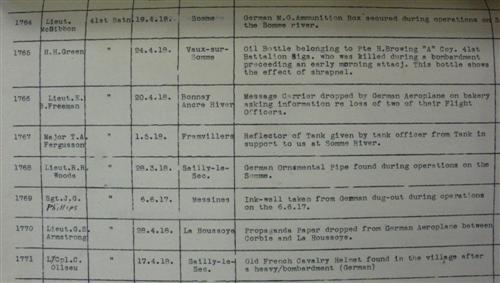
This is a page from a trophy register, one of many compiled by the AWRS.
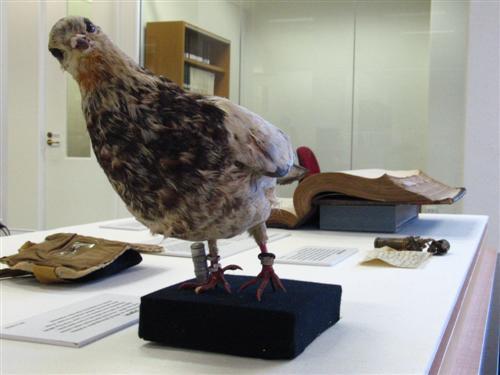
Hubert Wilkins, an official photographer working with the AWRS, recovered this French army carrier pigeon. The bird was believed to have died from exhaustion near Amiens on 11 June 1918. The AWRS often preserved animal remains because of the stories of endurance that they represent. (REL/10638)
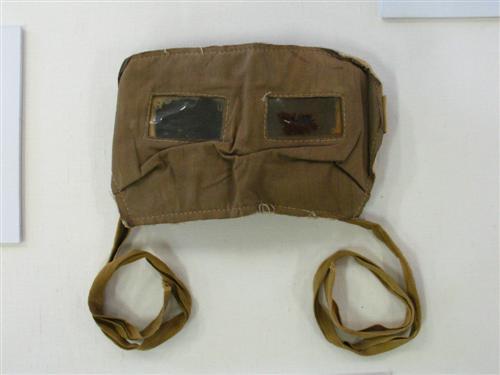
A pair of goggles collected in early 1918 for the AWRS by Lieutenant Arthur Birks of the 44th Battalion, AIF. They were used as protection against gas attacks. (RELAWM04094)
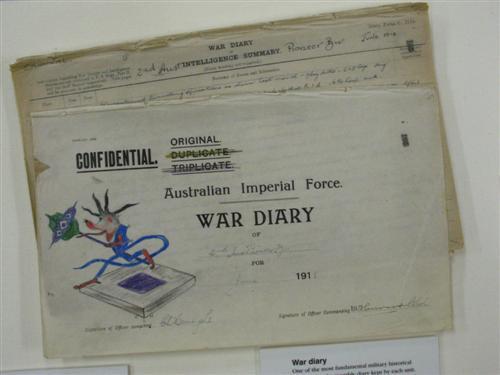
One of the most fundamental military historical records was the monthly war diary kept by each unit. Collecting and organising these was the AWRS’s first responsibility. Here the diary-keeper, Lieutenant Cecil Henry, has made his mark on history by adding a series of strange and whimsical drawings to the covers. For easy access, war diaries were bound, rather like books, by the AWRS in London. They remained in their covers until the 1980s, when they were unbound in preparation for microfilming. The war diaries are now being digitally copied for yet another generation of users. A sampling of the old covers have been kept by the Memorial. (AWM4, 14/14/25, 2nd Pioneer Battalion. [RC05191])
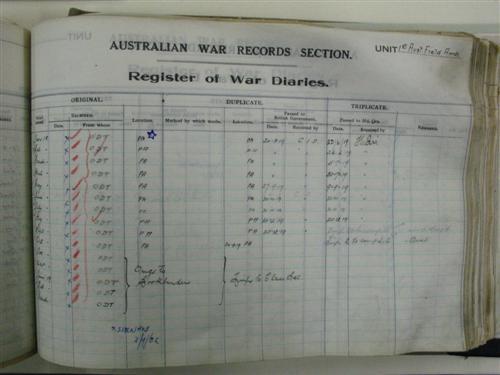
Thousands of unit diaries were created, in triplicate, during the First World War. Their receipt by the AWRS and subsequent locations needed to be recorded. Today such a task would be done using a computer database: not possible in 1917. Two large registers were created, and this is one of them. (AWM128, Item 2 [RC05185])
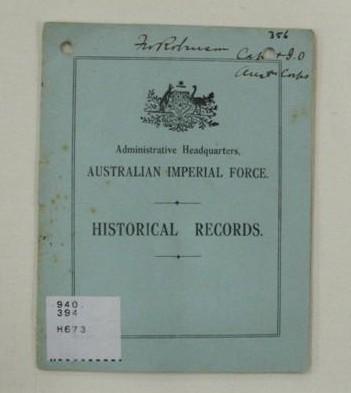
This is a booklet prepared in December 1917 by the AWRS reminding commanding officers of their recordkeeping responsibilities. Measures like this were successful: from late 1917, huge quantities of records flowed into the AWRS offices in London. (RC05184)
London, England. June 1919. Photostat Room of the Australian War Records Section with maps hanging over a line to dry.
London, England. June 1919. War Diaries Subsection of the Australian War Records Section. Clerical staff complete duplicate and triplicate copies of war diaries of the AIF. The former is passed to the British Government and the latter is used as a working copy.
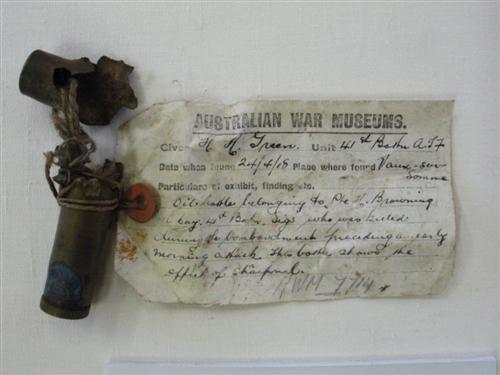
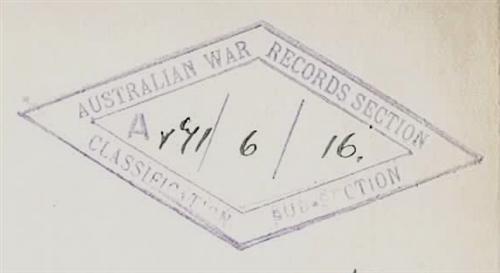
Labels like these were allocated to units in the AIF by the AWRS so that objects and records recovered in the field could be identified. Without this, they were valueless. The AWRS had the labels made out of a durable material: recent analysis has revealed it to be woven cotton impregnated with a thick layer of starch. (RC05199; RC05200; RC05201)
Further Reading
Books
Shaune Lakin, Contact: photographs from the Australian War Memorial collection (Canberra: Australian War Memorial, 2006). [Includes a chapter covering photographic work of the AWRS.]
Michael McKernan, Here is their spirit: a history of the Australian War Memorial 1917-1990 (Canberra & St Lucia, Queensland: Australian War Memorial & University of Queensland Press, 1991). [Includes a chapter that substantially covers the work of the AWRS.]
Articles
Charles Bean, ‘Australia’s records: preserved as sacred things: pictures, relics, writings’, The Anzac Bulletin, Vol 40, 10 October 1917, pp. 14-15.
Anne-Marie Condé, ‘Caring for the past’, Wartime, Vol 32, 2005, pp. 40-43.
Anne-Marie Condé, ‘Imagining a collection: creating Australia’s records of war’, reCollections: The Journal of the National Museum of Australia, Vol. 2, Number 1, March 2007.
Anne-Marie Condé, ‘War history on scraps of paper’: exhibitions of documents at the Australian War Memorial, 1922-1954, Public History Review, Volume 14, 2007 (forthcoming). [Includes a section on the AWRS and Bean and Treloar’s ideas about collecting and exhibiting the collection.]
Michael Piggott, ‘The Australian War Records Section and its aftermath, 1917-1925’, Archives and Manuscripts, Vol. 8, No. 2, December 1980, pp. 41-50. [Mainly about archives. This is the first serious published treatment of the work of the AWRS.]
Ann Millar, ‘Gallipoli to Melbourne: the Australian War Memorial 1915-1919’, Journal of the Australian War Memorial, Vol 10, April 1987, pp. 33-42. [General]
Simon Cooke and Anna Froude, ‘The Australian War Records Section’, [paper presented as part of the Australian War Memorial’s Summer Scholarship Scheme, 1989]. [Probably the best general treatment, but should be read in conjunction with McKernan].
Peter Stanley, ‘Ernie Bailey: “founder” of the Australian War Museum’, Wartime, Vol 28, pp 34-35. [Bailey worked for the AWRS and died in an accident while on duty]
Unpublished sources
John Treloar, ‘Report on the work of the Australian War Records Section from May 1917 to September 1918 by the Officer-in-Charge,’ AWM224, MSS553 Part 1.
Charles Bean, ‘The Australian war records: an account of the present development overseas and suggestions of course necessary to be taken at the end of the war’, AWM38, 3DRL 6673/362.
Charles Bean, ‘Further memoir, together with appendices, by C.E.W. Bean, official historian, Australian Imperial Force, concerning the official records and history of the Australian Imperial Force and the establishment of the Memorial’, AWM93, 2/5/7.
Charles Bean, ‘The Beginnings of the Australian War Memorial’, AWM38, 3DRL 6673/619.
Bruce Harding, ‘Official primary sources in the Library of the Australian War Memorial’, March 1973, AWM315, 535/002/001.
John Treloar, ‘Australia’s war records: how they were collected, what will be done with them’, [draft of an article for Life magazine], AWM93, 20/1192.





